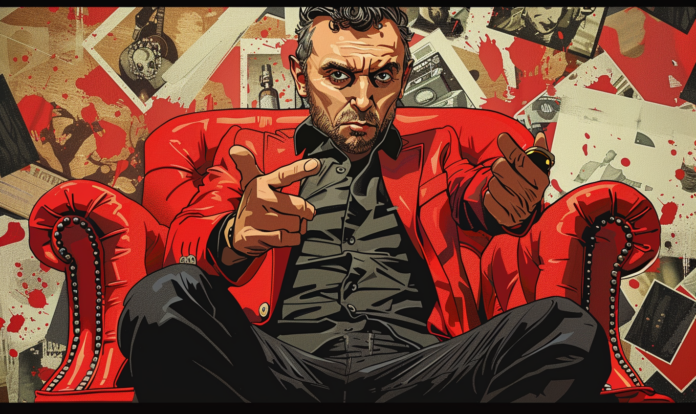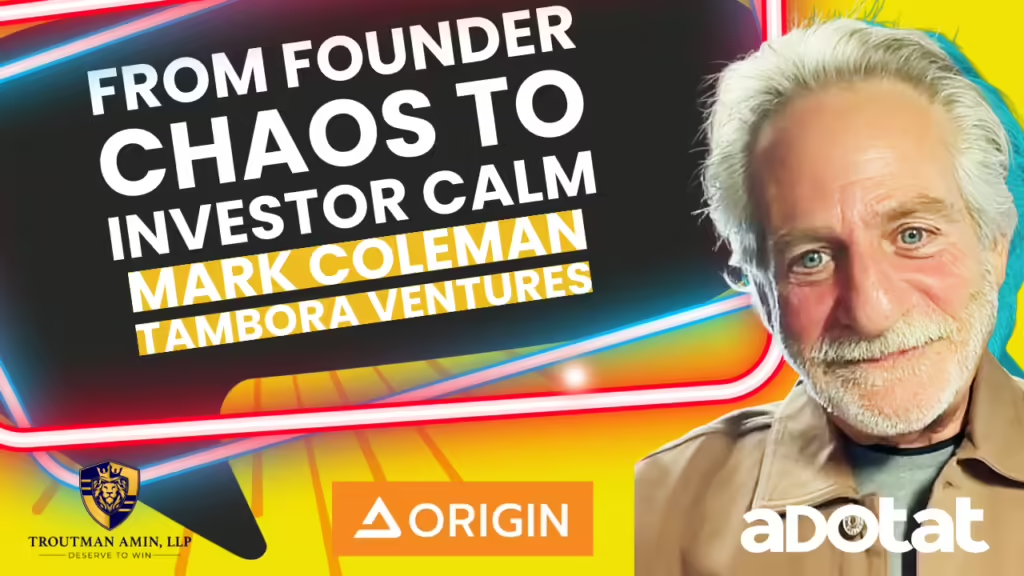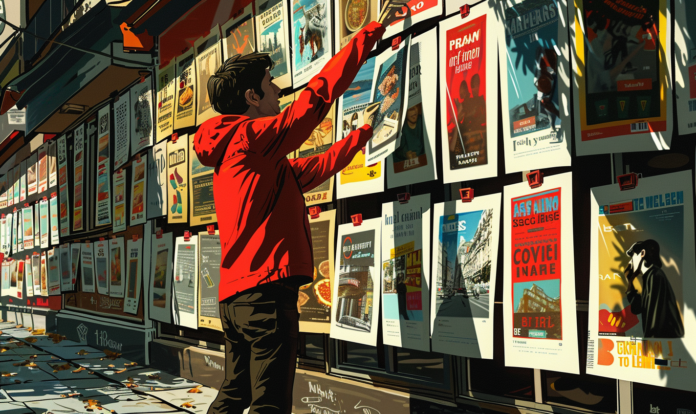Let me paint you a picture: I’m sitting across from Jonah Goodhart—yes, that Jonah Goodhart. The ad tech wunderkind who co -founded Moat, sold it to Oracle for a king’s ransom, and then had the audacity to not sail off into the sunset.
Instead, he’s back at it with Montauk Labs, tinkering away like some mad scientist who refuses to leave well enough alone. We’re supposed to be discussing his latest venture, but naturally, the conversation spirals into a kaleidoscope of topics—from cosmic accidents to the emotional underpinnings of insurance ads. And honestly, it’s a breath of fresh air in an industry suffocating under its own self -importance.
So here they are: ten pearls of wisdom Jonah casually tossed my way, each one sinking deeper into my jaded, tech -weary soul than I’d like to admit.
1. Embrace the Cosmic Accident
“Jonah, what cosmic accident or stroke of brilliance led you here?” I ask, half -expecting a rehearsed monologue about strategic planning and market disruption. Instead, he laughs—a genuine, hearty chuckle that cuts through the veneer of corporate pretense. “Cosmic accident? That’s about right,” he says.
He proceeds to recount how he and his brother Noah stumbled into their first venture while still in college. Picture this: two college kids capitalizing on e -commerce sites in the late ’90s that were practically begging people to take their products for free. No grand vision, no five -year plan—just two guys thinking, “Hey, free stuff is cool.”
“We didn’t know squat about advertising,” he admits. “We were just college kids who thought getting free stuff on this amazing new thing called the internet was neat.” Their ‘business’ was essentially a newsletter highlighting where to snag freebies online. Then Barnes & Noble called—not to sue them for exploiting loopholes—but to offer them a commission. You can’t make this stuff up.
“So suddenly, a business was born,” he says, still sounding slightly incredulous. It’s like tripping over a rock and finding out it’s a gold nugget. Most people would chalk it up to dumb luck, but Jonah turned that cosmic accident into a launching pad.
The lesson? Life doesn’t always need your meticulous planning. Sometimes, it’s about recognizing the opportunity in randomness. While you’re busy plotting your next move, the universe might just be waiting to drop a golden egg in your lap. So keep your eyes open—and maybe, just maybe, answer those unexpected calls.
2. Mentors Matter, Even the Unlikely Ones
“Was there a pivotal mentor or anti -hero that shaped your path?” I prod. Jonah doesn’t hesitate. “Mike Walrath,” he says, eyes lighting up. For the uninitiated, Mike’s the guy who went from selling gym memberships to pioneering digital ad exchanges. Not exactly the linear career trajectory they teach you in business school.
“Mike cold -called me,” Jonah recalls. “He said, ‘I see what you’re doing. You should buy banner ads.'” Now, let’s pause here. Most of us treat cold callers like telemarketers during dinner—necessary evils to be dispatched swiftly. But Jonah listened. Maybe he was bored; maybe he sensed something. Either way, that call led to them buying significant media over a weekend—on a credit card, no less.
Fast forward, Mike leaves DoubleClick and reaches out again: “I’m starting a company. Do you and your brother want in?” They did, and thus Right Media was born, eventually selling to Yahoo for a cool $680 million. Not too shabby for a guy who used to hustle gym memberships.
The real kicker? Mike wasn’t some industry titan or seasoned executive. He was just a guy with hustle, vision, and the chutzpah to cold -call potential clients. Jonah’s takeaway? Don’t underestimate anyone. Wisdom doesn’t always come adorned with titles and accolades. Sometimes, it’s the guy who used to peddle gym memberships who’ll lead you to your next big break.
So the next time you get an unsolicited pitch, maybe—just maybe—don’t hang up immediately. You never know who might be on the other end of the line.
3. Age Is Just a Number, So Ignore It
“Are you the Yoda or Darth Vader in your story?” I quip, expecting a smirk. Jonah chuckles, but then gets serious. Back when he and his brother started, being young wasn’t the asset it is today. Forget Silicon Valley’s fetishization of 20 -something CEOs in hoodies. In the late ’90s, youth was a liability.
“People wanted to know if I had kids, how old I was,” he says. “They’d ask, ‘Who’s the white hair in the room?'” Imagine that. Now, companies are practically throwing money at teenagers who can code a halfway decent app. But back then, Jonah and Noah were so wary of being dismissed that they dodged face -to -face meetings.
“Mike tried to meet us, and we’d always have an excuse,” he admits. “We didn’t want him to realize he was dealing with college kids.” The charade didn’t last forever. One day, someone let slip that Jonah was at a final exam when Mike called. The cat was out of the bag.
Did it matter? Not really. But it underscores how arbitrary metrics like age can be barriers—or perceived ones. Jonah didn’t let societal expectations dictate his path. He knew what he brought to the table, even if others couldn’t see past his lack of crow’s feet.
So what’s the modern takeaway? Ageism cuts both ways. Whether you’re too young or too old in someone else’s eyes, screw ’em. If you have the vision and the drive, that’s what counts. Stop waiting for the world to validate you based on outdated criteria. Forge ahead, and let your work speak for itself.
4. The Art of the Pivot Isn’t Just for Startups
“Was there a decision that made you think, ‘I must have been out of my mind?'” I ask, leaning in. Jonah nods. “Our first company had an offer on the table,” he says. “We could have sold it and been very well off. But we didn’t.”
Cue the collective gasp. They turned down a lucrative exit, and the company eventually fizzled out. Most would consider that a colossal screw -up, the kind you’d lose sleep over for decades. But not Jonah.
“Had we sold, we might’ve been stuck working for the acquirer,” he muses. “We wouldn’t have been free to start Right Media with Mike.” So, in a twist of fate, what seemed like a misstep paved the way for something bigger.
It’s like missing your flight only to find out the plane had mechanical issues. At first, you’re cursing your luck; later, you’re thanking your lucky stars. Jonah sees setbacks not as failures but as redirections.
“Failure isn’t the end; it’s just a plot twist,” he says, shrugging as if it’s the most obvious thing in the world. “Keep the story moving.”
So maybe the next time life kicks you in the teeth, consider that it might be steering you toward a better path. The art of the pivot isn’t just for startups; it’s for anyone willing to see opportunity in adversity. And if you can’t see it, maybe you’re not looking hard enough.
5. Emotion Drives Everything, Even Advertising
“Measurement is shifting towards outcomes and even emotion,” I note. “How do we measure the unmeasurable?” Jonah leans forward, eyes gleaming like he’s just been handed a winning lottery ticket.
“We are emotional beings,” he begins. “We may think we behave rationally, but it’s just not the case.” In an industry obsessed with data points and KPIs, here’s a guy preaching the gospel of feelings.
He dives into how emotions influence consumer behavior more than any A/B test ever could. “Negative emotion isn’t always bad,” he points out. “Sometimes it gets people to take action.”
He brings up life insurance ads—the ones that remind you of your mortality to sell policies. “They tap into anxiety to motivate you,” he says. “It’s twisted but effective.”
Jonah argues that with advancements in AI and machine learning, we can now quantify these emotional triggers. It’s not about manipulating consumers but understanding them on a deeper level. “If we can leverage emotion to understand content better, we can make better decisions,” he insists.
It’s refreshing to hear someone in tech acknowledge the messy, irrational nature of humanity. We’re not just data points on a spreadsheet; we’re complex beings driven by hopes, fears, and desires. And maybe—just maybe—acknowledging that makes for better business and better connections.
So the next time you’re crafting a campaign or making a pitch, remember: Tug at the heartstrings, not just the purse strings. Emotion isn’t the enemy of logic; it’s the engine that drives it.
6. Context Is King, Queen, and the Whole Damn Court
“Let’s delve into context,” I suggest, bracing myself for a jargon -filled monologue. Instead, Jonah surprises me. “My dad wrote a book called Mobian Nights,” he says. “One of his big ideas is that we cannot sidestep context.”
Wait, we’re quoting dad now? And not in a “My dad used to say” folksy wisdom kind of way. Jonah’s father is a retired professor who delves into the philosophy of context and meaning.
“The same piece of content can mean something entirely different depending on where it’s placed and who’s consuming it,” he explains. “Post an article on Medium, and it has one meaning. Post it on The Wall Street Journal, and it carries a different weight.”
He points out that the ad industry has largely ignored this nuance. “We’ve not created metrics to understand how context affects perception,” he laments. “We’ve been giving brands a false sense of security with flawed brand safety measures.”
Jonah believes that with AI, we can revolutionize how we understand and leverage context. It’s not just about avoiding negative keywords or blacklisted sites. It’s about a holistic understanding of the environment in which your content or ad appears.
So, the next time you slap an ad onto a platform without considering the surrounding content, think again. Context isn’t just an accessory; it’s the outfit. And if you mismatch, you’re not just committing a fashion faux pas—you might be undermining your entire message.
7. Work -Life Balance Is a Myth, So Find Joy in the Chaos
“So, how do you maintain work -life balance?” I ask, half -expecting the usual spiel about meditation apps and scheduled downtime. Jonah looks at me like I’ve asked him to explain quantum physics in three words.
“When you do it well, work is life and life is work,” he says. “It’s all merged.”
In an age where everyone’s preaching about ‘unplugging’ and ‘mindfulness,’ Jonah’s take is refreshingly unorthodox. He doesn’t see a divide between his professional and personal life because he’s passionate about both.
“I’m always thinking about things,” he admits. “But when I’m with my family, I try to be fully present.”
It’s not about clocking out at 5 p.m. and shutting off your brain. It’s about integrating your passions so seamlessly into your life that the lines blur—in a good way.
“Stop compartmentalizing,” he advises. “If you love what you do, the lines blur, and that’s perfectly okay.”
So maybe the quest for balance is a wild goose chase. Perhaps the goal should be to find what excites you so much that you don’t mind the overlap. Life is messy and chaotic, but that’s where the magic happens.
8. Surround Yourself with People Who Light You Up
“Any secret strategies on how to stay motivated?” I ask, expecting tips on time management or perhaps a caffeine regimen. Jonah smiles. “Work with great people who are a joy to speak with,” he says simply.
He talks about his team with genuine affection. “I’m thrilled when I get on a call with one of my teammates,” he says. “I literally see a message from them and think, ‘This is going to be good.'”
Imagine that—actually enjoying your colleagues. In a world rife with toxic workplaces and office politics, Jonah’s approach seems almost radical.
“Energy is contagious,” he asserts. “If your colleagues don’t make you feel alive, what’s the point?”
He extends this philosophy to his personal life. “I have four wonderful children and a wonderful wife,” he says. “I’m incredibly proud of them.”
The takeaway? Your environment matters. The people you surround yourself with can elevate you or drag you down. Choose wisely.
So if you’re stuck in a dead -end job with coworkers who make you want to fake a Wi -Fi outage, maybe it’s time to reassess. Life’s too short to spend it with people who don’t ignite your passion.
9. Build Habits Like Your Life Depends on It—Because It Does
“What’s the most unconventional advice you’ve ever received, and did it work out for you?” I ask. Jonah reflects for a moment. “Mike once told me to go out and do 800 meetings to understand the market,” he says. “I literally did 800 meetings.”
Eight. Hundred. Meetings. Most of us complain about attending one pointless Zoom call. But Jonah saw the value in the grind.
“It was eye -opening,” he says. “You learn what problems people are trying to solve.”
He ties this back to the importance of building good habits. “Whether it’s a habit to take a meditation pause or to work out, find what helps you,” he advises. “Consistency isn’t just key; it’s the whole damn door.”
In a culture obsessed with quick hacks and silver bullets, Jonah champions the unglamorous daily grind. It’s not sexy, but it’s effective.
So stop chasing the latest productivity fad. Build habits that move the needle, even if they require more elbow grease than you’d like. Your future self will thank you.
10. Retirement Is for Quitters
“Do you ever see yourself retiring?” I inquire, expecting a nuanced take on future plans. Jonah doesn’t miss a beat. “I don’t,” he states emphatically.
He shares a story about Warren Buffett’s colleague who retired and died the next year. “Let that be a lesson,” he says.
For Jonah, retirement isn’t a goal; it’s a non -entity. “I can’t imagine only playing golf or sitting on a beach,” he says. “I want to stay intellectually curious and positively impact others.”
It’s a stark contrast to the societal narrative that we should work ourselves into the ground and then spend our golden years doing… well, nothing of consequence.
“Passion doesn’t have an expiration date,” he declares. “If you’re lucky enough to find work that excites you, why would you ever want to stop?”
So perhaps we need to rethink the entire concept of retirement. If you’re doing something you love, the idea of stopping becomes irrelevant. Keep the fire burning until the wheels fall off.
Final Thought
As our conversation winds down, I pose one last question. “If you could go back and give your younger self one piece of advice, what would it be?”
“Build good habits, reduce stress, and surround yourself with people you care about,” he replies without hesitation. “Optimize for happiness.”
And there it is. Not some earth -shattering revelation, but a simple truth that we often overlook in our relentless pursuit of success.
Jonah Goodhart isn’t just another name in the ad tech world. He’s a testament to the power of embracing randomness, valuing unlikely mentors, defying arbitrary norms, pivoting when life demands it, understanding the emotional core of humanity, recognizing the paramount importance of context, finding joy in the beautiful mess that is life, surrounding yourself with people who elevate you, committing to the unsexy work of building habits, and rejecting the notion that passion has a sell -by date.
In a world obsessed with the next big thing, maybe it’s the timeless truths that make the biggest impact. So take a page out of Jonah’s playbook. You might just find that the keys to success—and happiness—have been right in front of you all along.




























